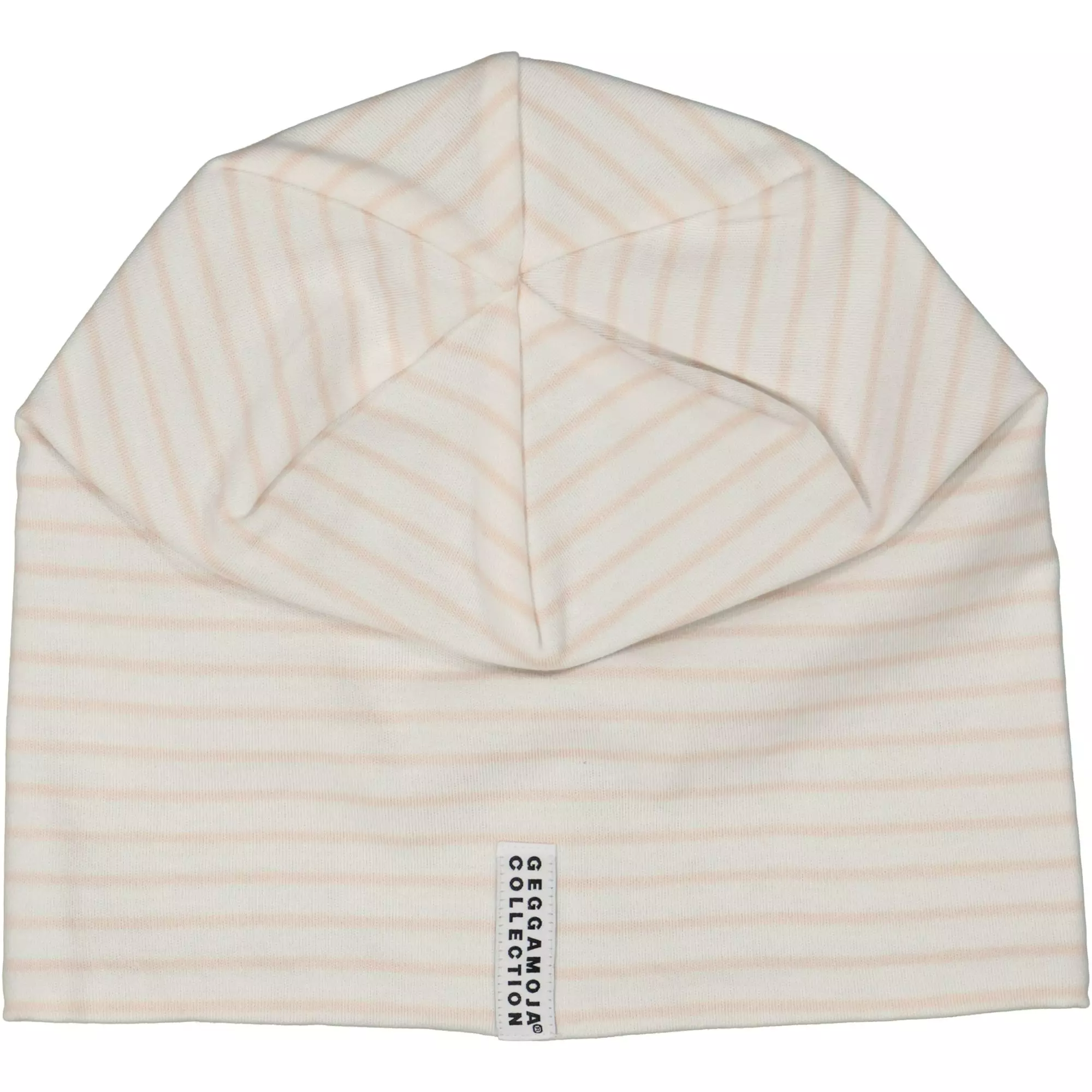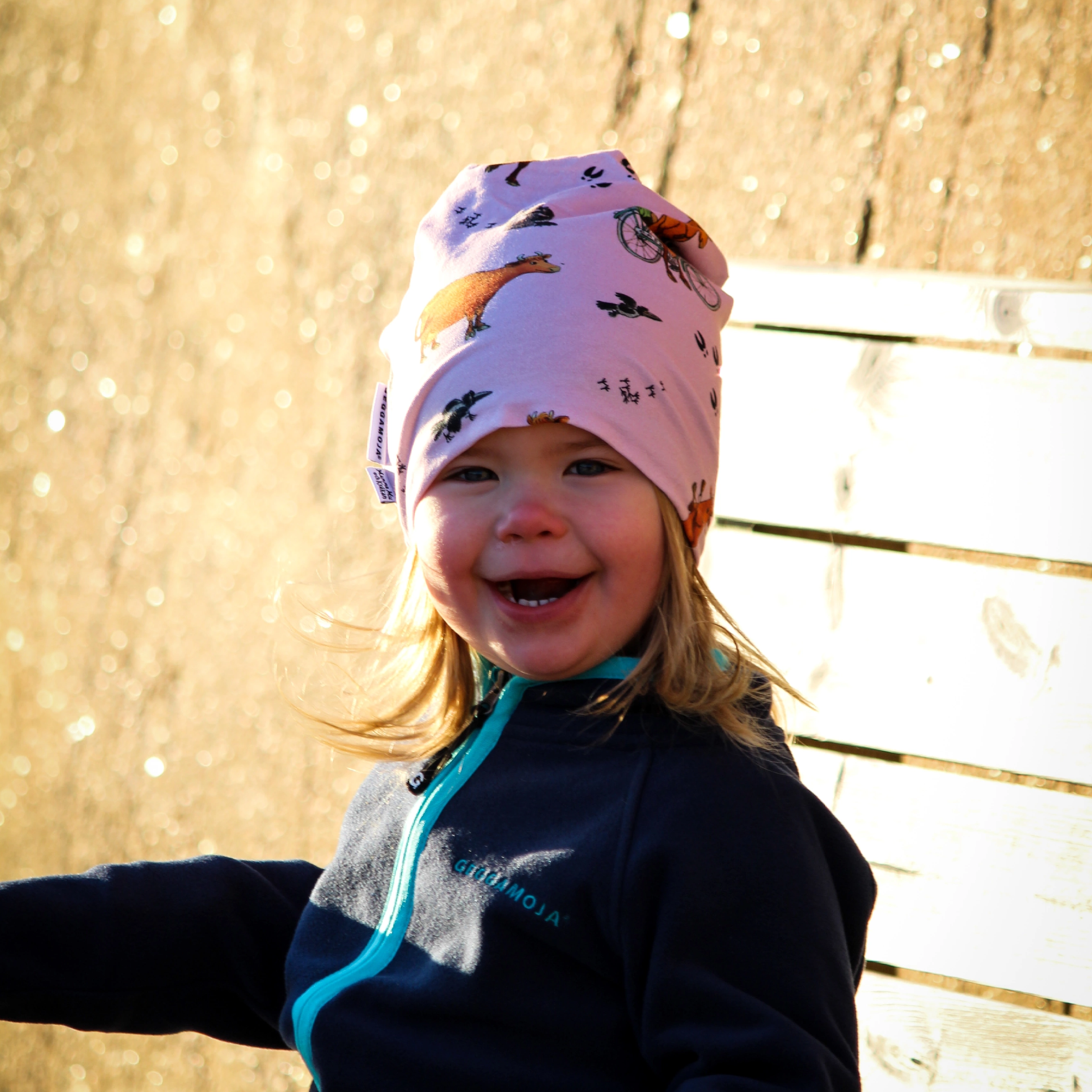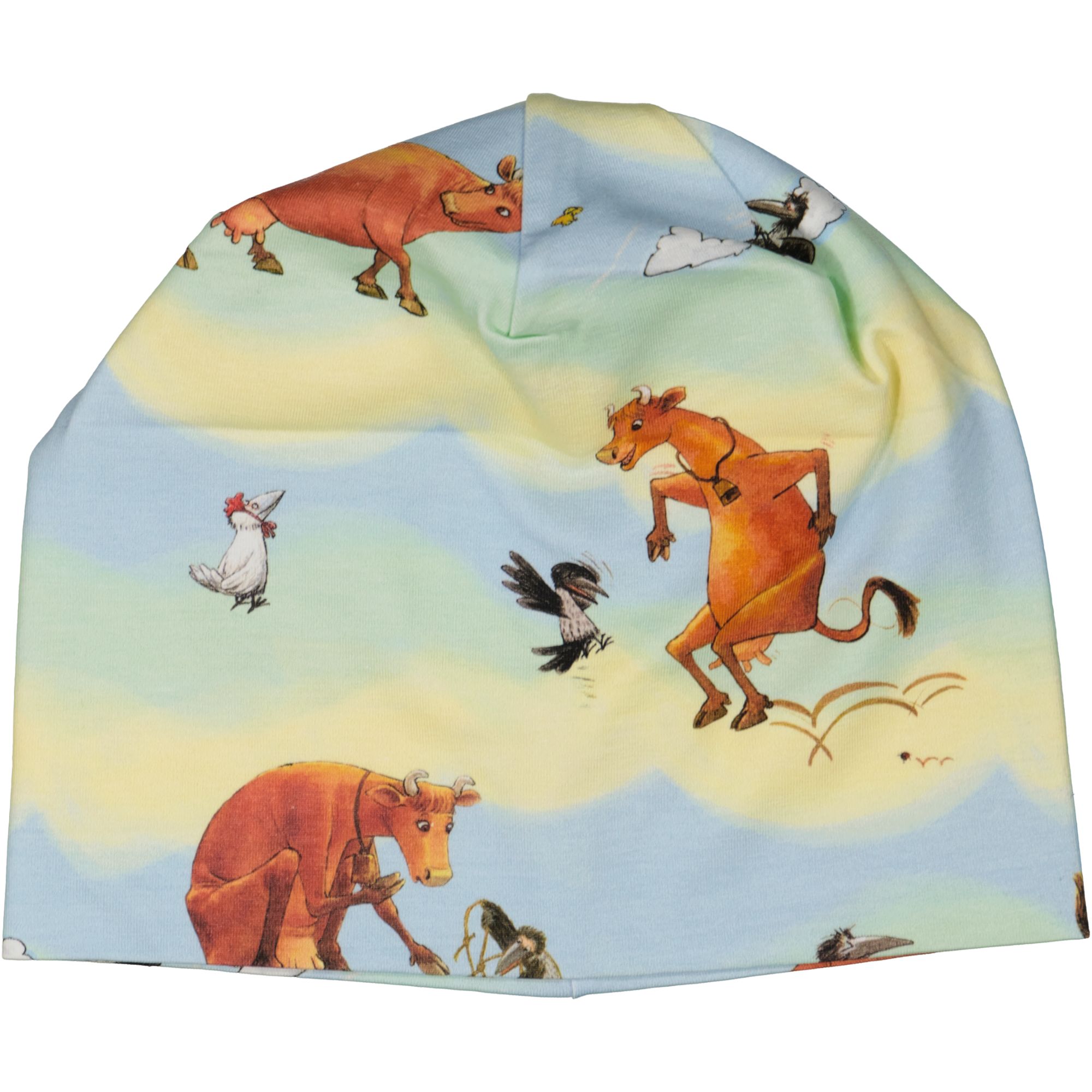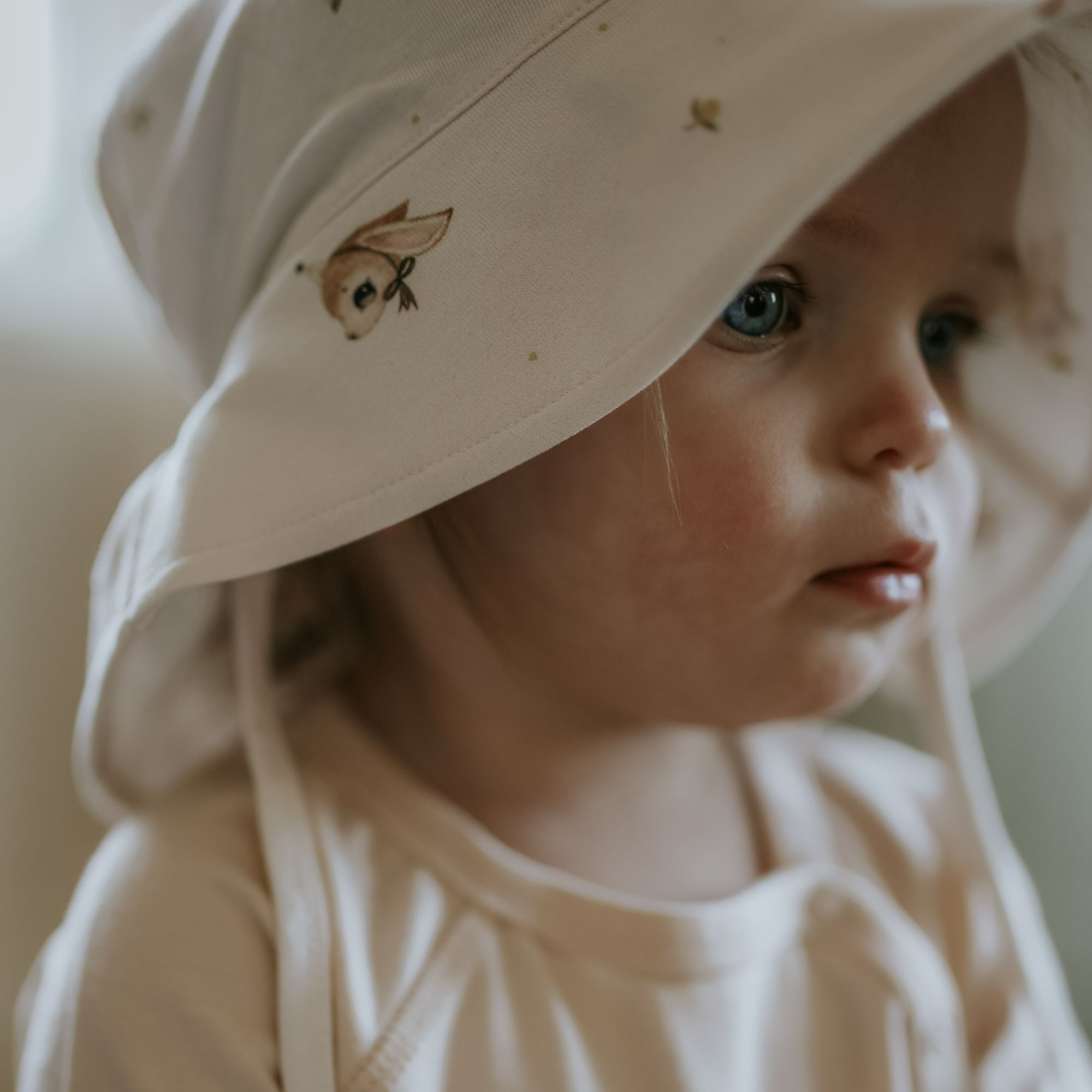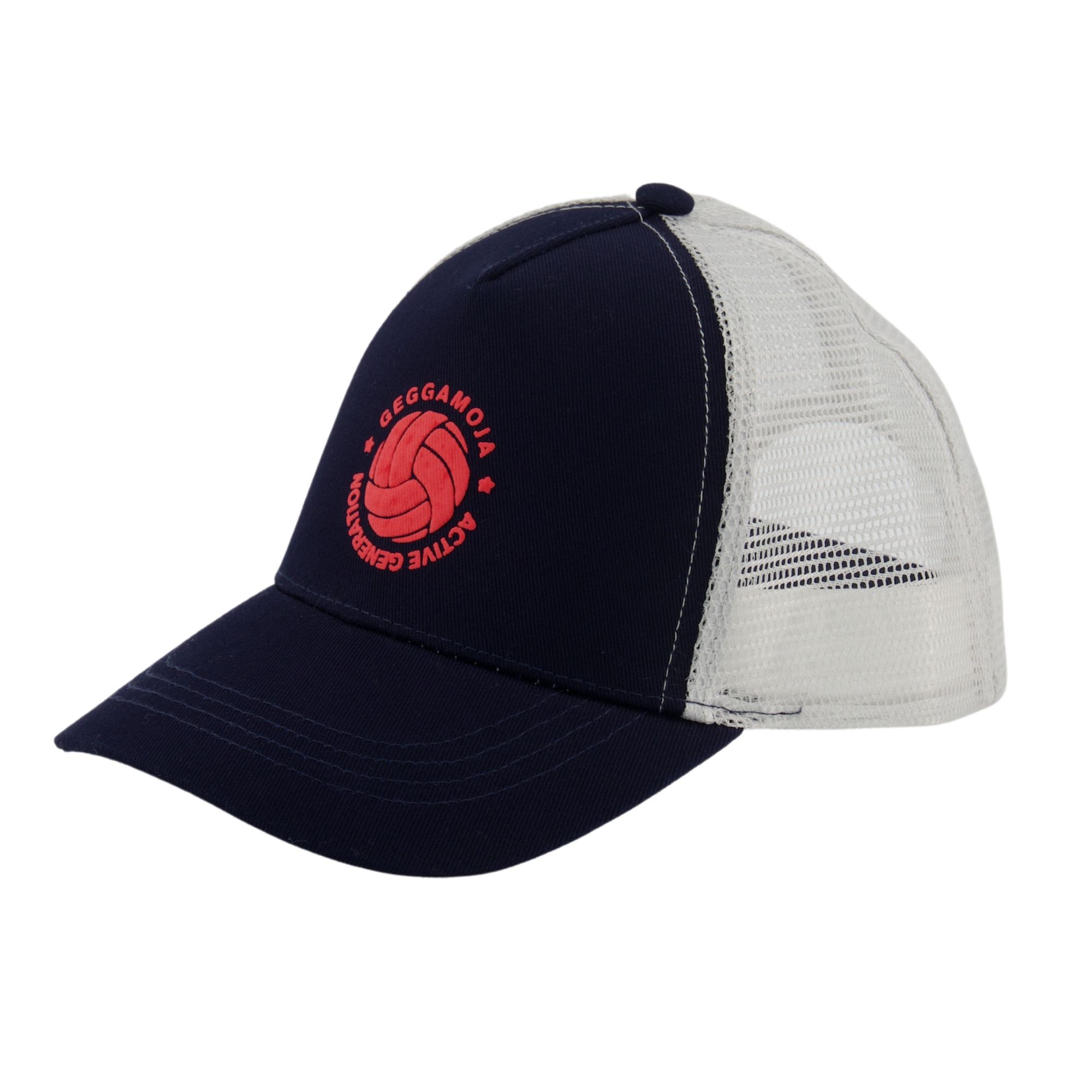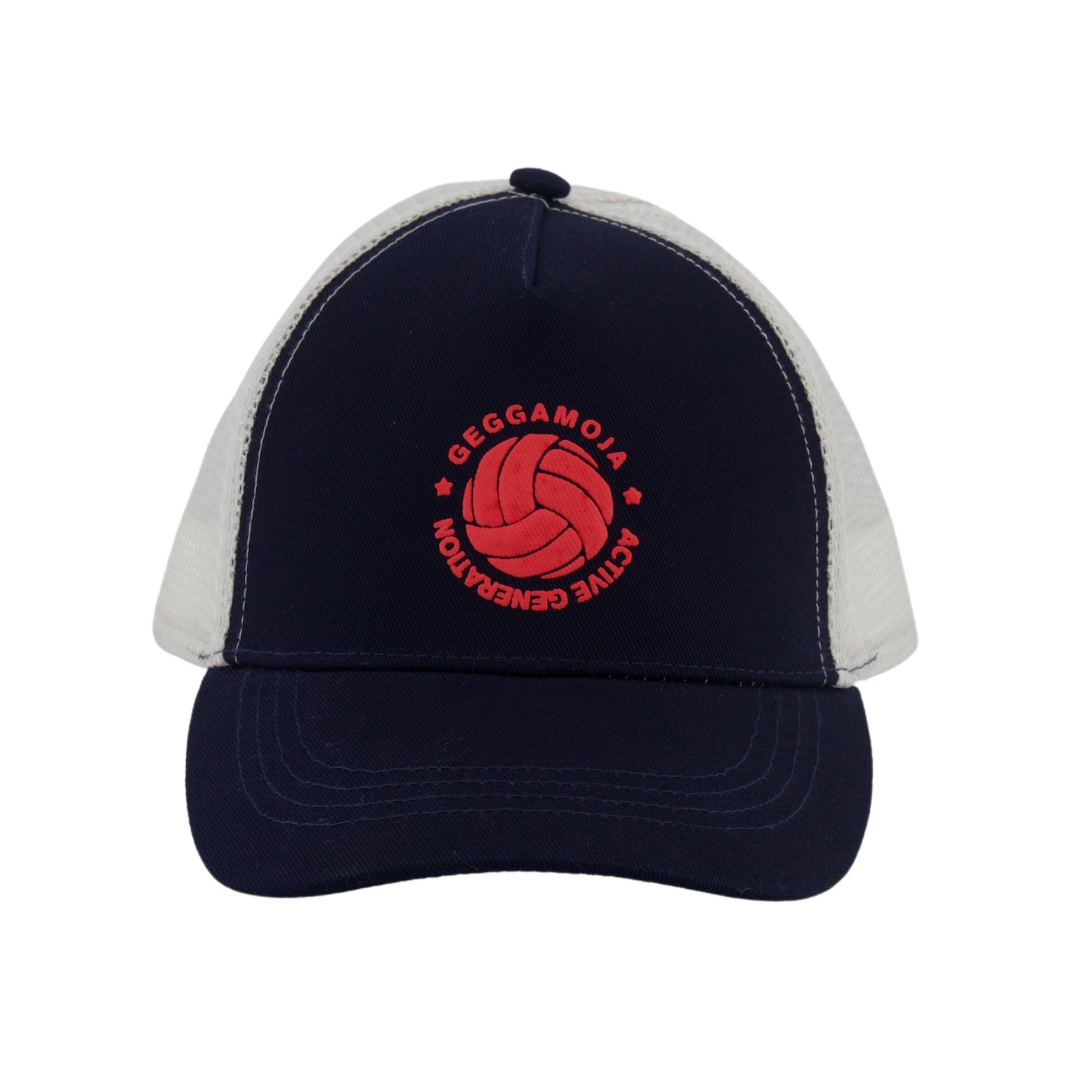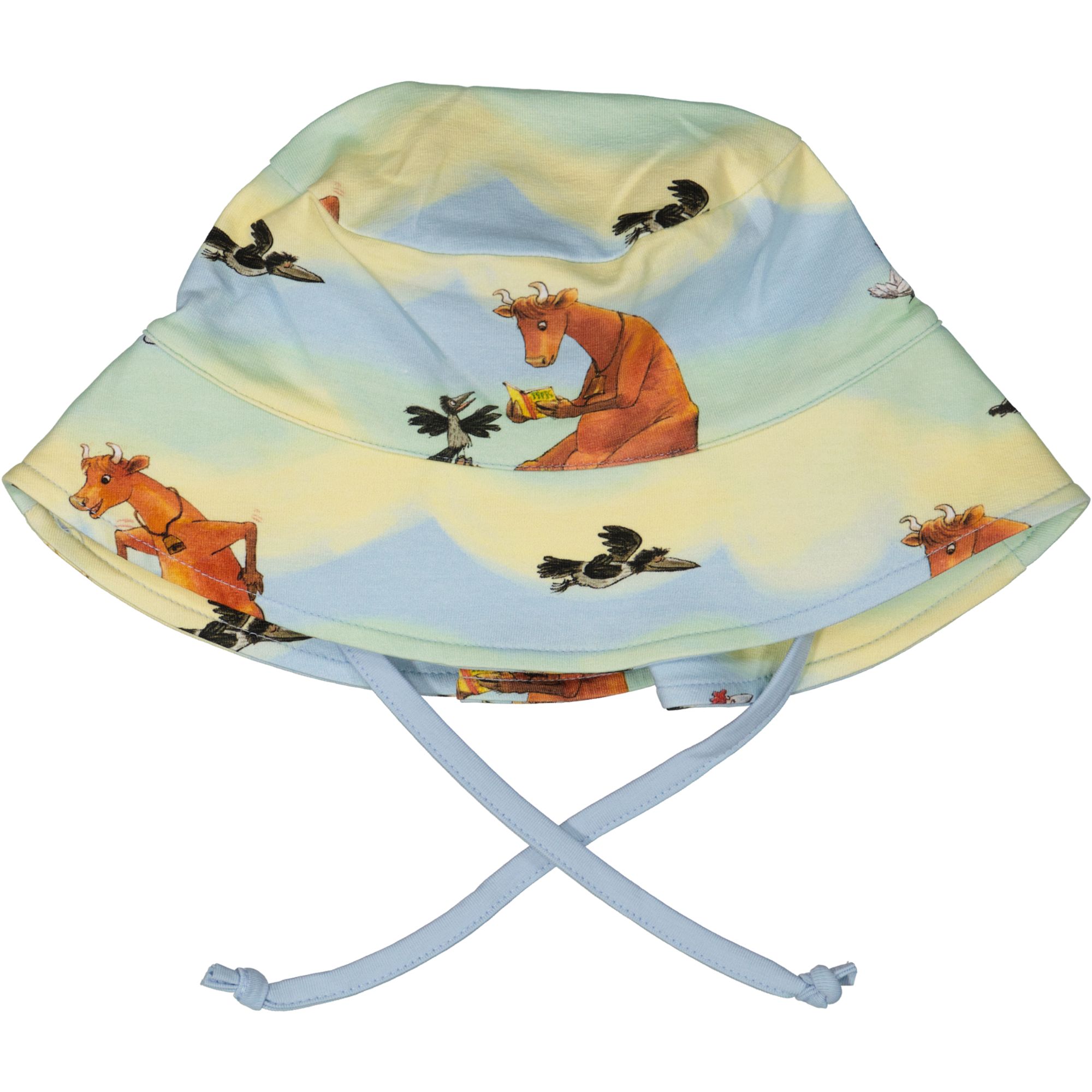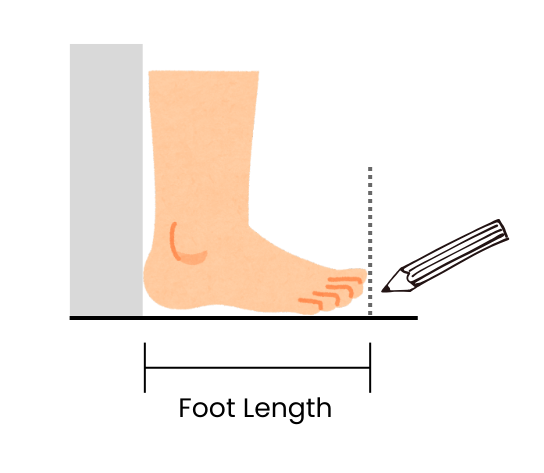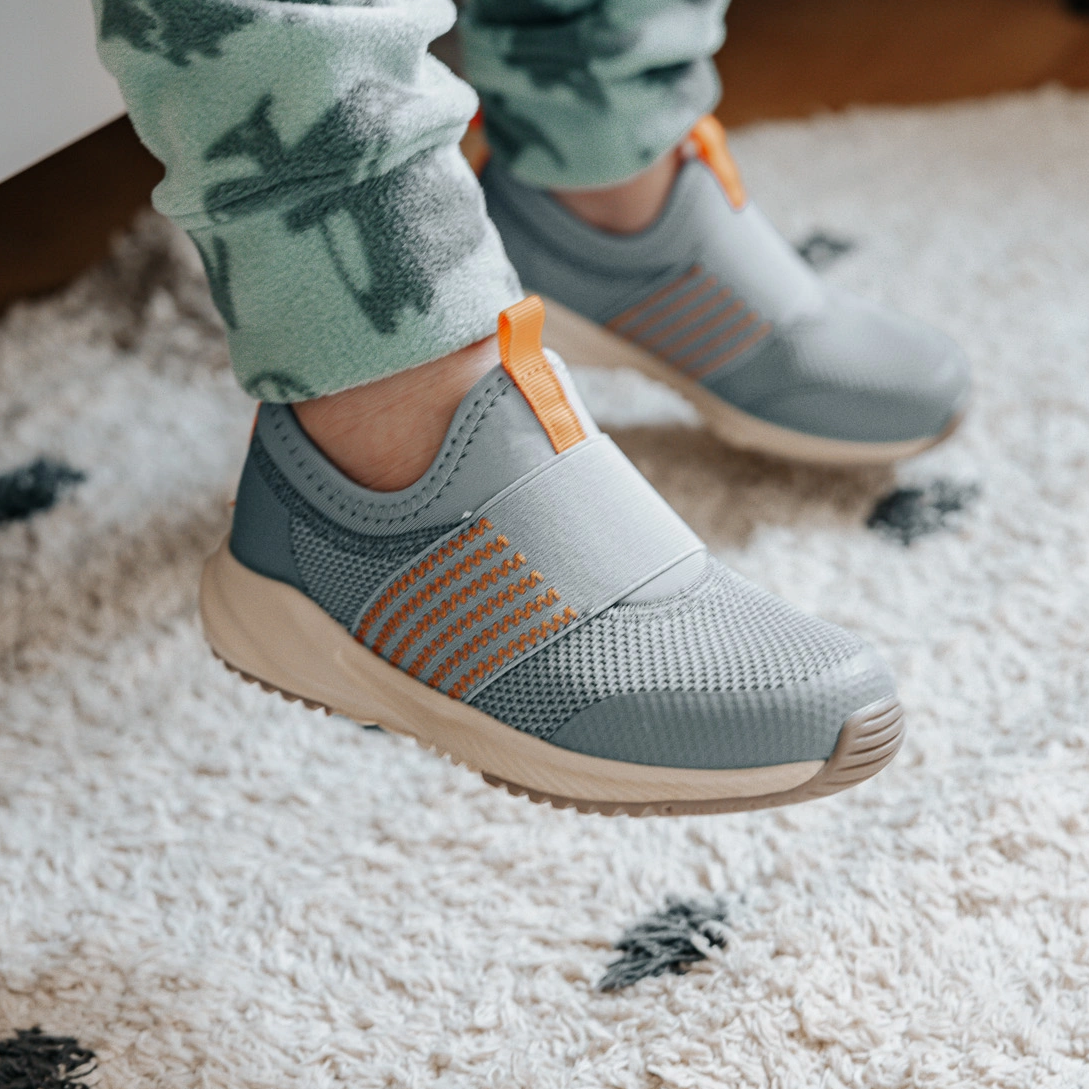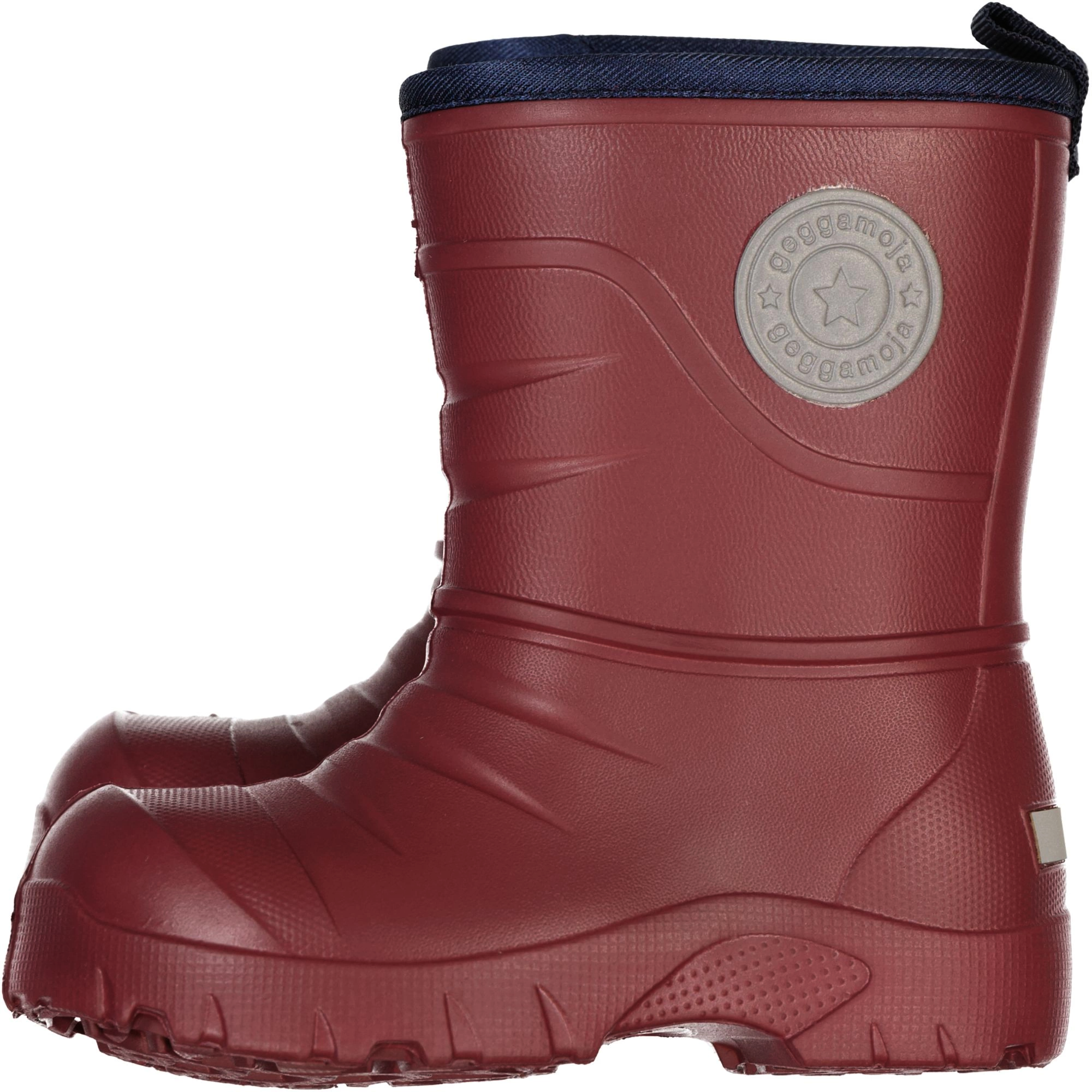Children's Clothing
Geggamoja's clothing is generally true to size or slightly larger. Our ambition is to always have an updated size guide for all our garments so you can measure specific items for the right fit you desire.
In most cases regarding children's clothing, sizes are calculated based on centilong (cl), meaning the child's height in centimeters from head to toe. Our general advice is to choose the size closest to the child's current height. For example, if the child is 97 cm tall, choose size 98/104.
Fit:
The fit of children's clothing is, of course, very important. We want the garment to fit well and not restrict the child's movement and play, while also ensuring it doesn't become too small too quickly. Children's clothing should never hinder natural movement. The size should allow enough room for the child to jump, crawl, run, hang, bike, climb, and embark on all sorts of adventures. Imagine walking in pants that are so long they keep falling down or having to shake your hands out of the sleeves. So too big, too small, or too tight are out—we aim for that perfect fit.
Pants should stay up when the child runs quickly, end around the ankle, and be roomy enough for the child to sit comfortably. Geggamoja's soft pants have cuffs, allowing room to grow without the child tripping over the ends. Leggings and tights can also be slightly larger. Jeans, on the other hand, should be bought to fit now; otherwise, they risk becoming tight under outerwear or around the waist.
Good to know:
The measurements in the size guides available on each product on the website refer to the measurement of the garment, i.e., the measurement of the sleeve on this specific shirt. This allows you as a customer to determine how the garment should fit on the child. A simple way to see what size you need is to take a fitting garment from home and measure it, then choose the matching size from our collection.
Contact Us!
Still unsure about what size to buy? We are here for you! Feel free to contact us at kundtjanst@geggamoja.com or call 08-758 28 82, and we’ll help you choose the right size for your children.












